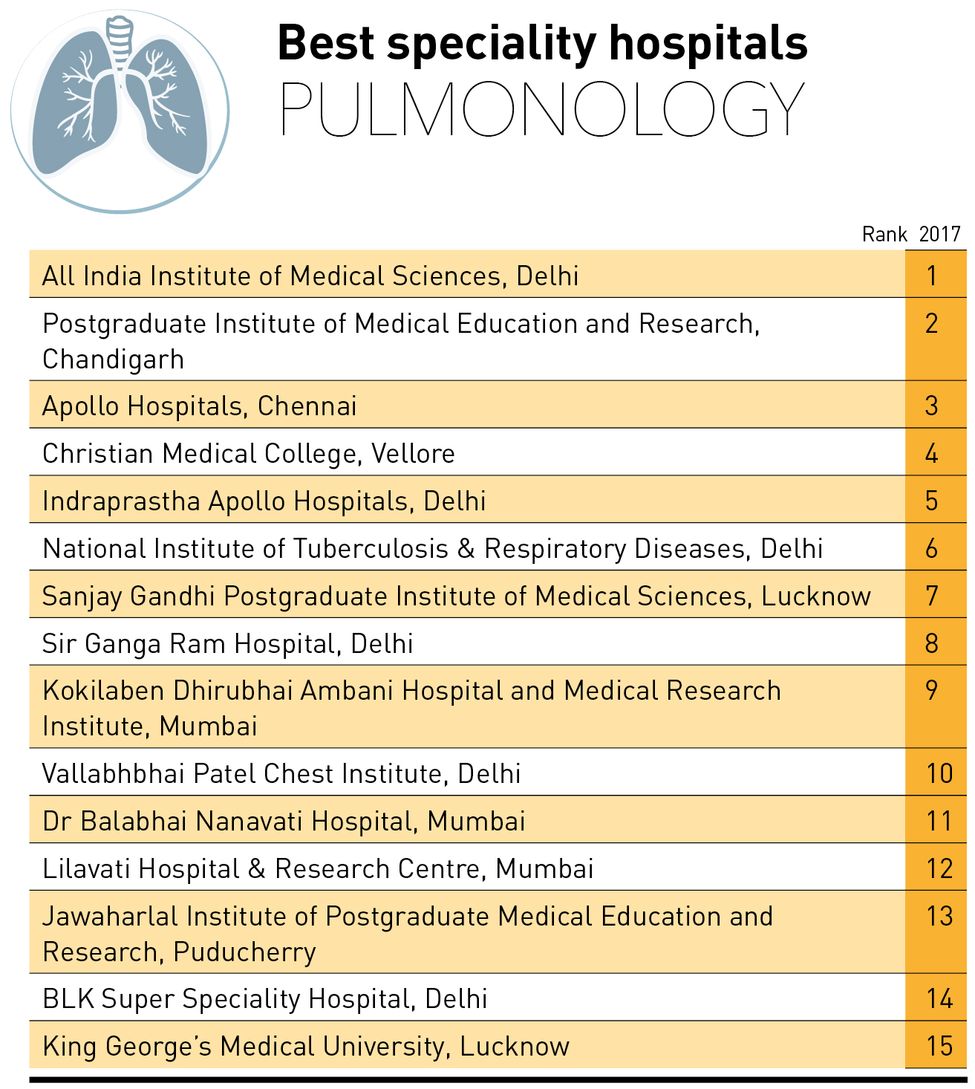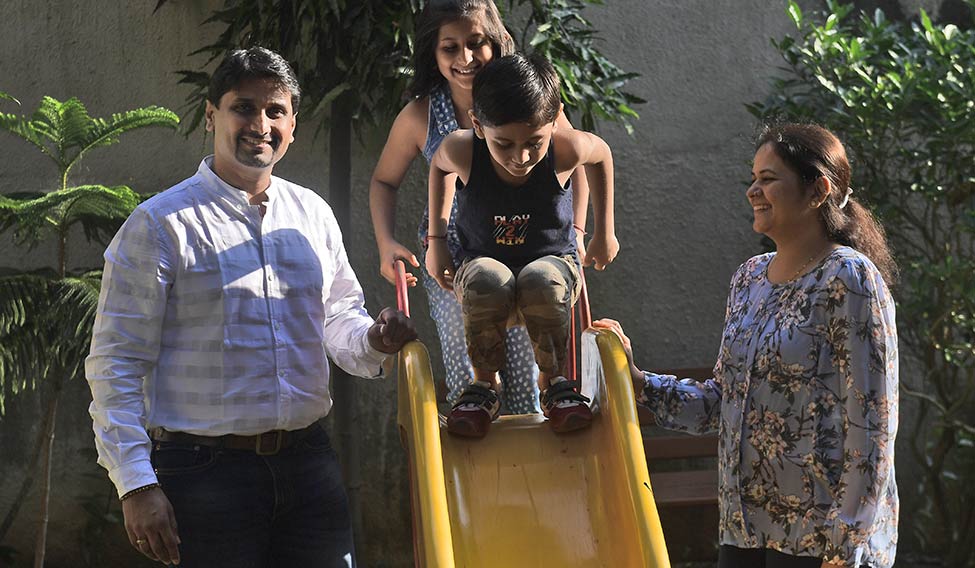It was freezing cold outside. Shailesh Bhutada, 34, had been waiting for a cab, his forehead pressed against a foggy windowpane of his office lobby. He grew impatient after a while and walked to his hotel, about 6km away.
Bhutada, a system expert at Nagravision, Mumbai, had been in Moscow for two weeks. That was too short a time for his body to get used to the bone-chilling cold. By the time he reached the hotel, he had developed hypothermia. He felt uneasy and breathless. It seemed as if half his brain had shut down.
A few months after he returned to Mumbai, Bhutada, while taking a shower, had severe back pain and started sweating profusely. He shrugged it off as spasm. After a few physiotherapy sessions, he had some relief. But the pain didn't subside. “It was 9 on a pain scale of 0-10. Sometimes I would scream in excruciating pain and security guards in the lobby would rush to my apartment on the eleventh floor,” he says.
Bhutada was diagnosed with pulmonary sarcoidosis, an autoimmune disease. It is a multi-system inflammatory disease of unknown aetiology, says Dr Prashant Chhajed, head, department of respiratory medicine, Fortis Hiranandani Hospital, Navi Mumbai. Bhutada says, in his case, the harsh Moscow weather could have triggered the first manifestation of the disease.
Lungs and lymph nodes are the organs that get most commonly affected by sarcoidosis. “The pulmonary symptoms of sarcoidosis include breathlessness, cough and chest pain,” says Chhajed. Bhutada had an accumulation of fluid in his lungs that had to be removed. He felt much better after the procedure, though he had relapses later.
Sarcoidosis is grossly under-diagnosed in India. It is often misdiagnosed as tuberculosis and vice versa, says Chhajed. Pulmonary sarcoidosis can obstruct the upper airway and turn life-threatening if left untreated.
India presents a dismal picture when it comes to lung diseases. The country has the largest number of lung disease deaths in the world. According to the Global Burden of Disease study published in Lancet recently, a quarter of all global deaths due to chronic obstructive pulmonary disease (COPD) and asthma occur in India. COPD killed 8 lakh Indians in 2015, and 1 lakh died from asthma. Living in metros like Mumbai, Bengaluru or Delhi is equivalent to smoking 20 cigarettes a day, says Dr Kumar Doshi, consulting pulmonologist at K.J. Somaiya Super Specialty Centre, Mumbai. “One hour of being exposed to dhoop [smoke from incense and other puja materials] can be as unhealthy smoking 200 cigarettes. In a study [conducted by the Chest Research Foundation], 25 per cent of all priests exposed to smoke were found to have obstructive airway diseases. Other common miscreants include mosquito coils, repellents and liquidators.”
In cases of COPD, the airways get narrow or blocked, making it difficult for the patient to squeeze air out of lungs. This results in breathing problems. Valve therapy, soon to be introduced in India, offers a glimmer of hope for those suffering from COPD and chronic bronchitis, which is highly prevalent among smokers. “Valve therapy involves placing endobronchial valves in the lungs via a flexible bronchoscope,” says Doshi. Non-invasive ventilation in the form of BiPAP machines can also work wonders for patients with COPD. It is particularly effective for those with high carbon dioxide in their blood, says Dr Vasunethra Kasargod, consultant chest physician, Vikram Hospital, Bengaluru. BiPAP machines cost Rs 50,000 to Rs 70,000. They can be used at home, too.
Bronchial thermoplasty, a new endoscopic treatment, is a boon for asthmatics who don't respond to inhalers or other treatments. “In this, a flexible tube is passed through the nose into the lungs and controlled heat is applied in the airways,” explains Doshi. Currently, very few centres in India offer this treatment.
Seema Dalal from Mumbai, an asthmatic, was put on a metered-dose inhaler, which had a spacer attached to it. The 50-year-old found it difficult to carry the spacer while going out, and also had trouble breathing while pressing the pump. She stopped using it. “She looked very apologetic when she visited me,” recalls Dr Kinjal D. Modi of Hinduja Healthcare Surgical, Khar, Mumbai. She prescribed a breath actuated metered-dose inhaler, which can deliver the medicine automatically. “It is a precise device for drug delivery. Dalal found it very handy, too. Her asthma got controlled easily as her compliance improved,” says Modi, a consultant in pulmonology. The breath actuated metered-dose inhaler costs Rs 800.
Those struggling with over expanded lungs and breathlessness owing to asthma and smoking-related lung diseases can breathe easy now. “We can reduce the overinflation of the lungs by putting stents in them,” says Dr Satyanarayana Mysore, head, interventional pulmonology and sleep medicine, Manipal Hospitals, Bengaluru. It is a non-surgical procedure that costs 150,000. “The cost can be further brought down by replacing stents with glue,” he says.
As the resurgence of tuberculosis has become a major health challenge in India, causing one death per minute, new diagnostic tools offer hope for patients. “About seven years ago, the diagnosis of pulmonary tuberculosis was made based on patient history. Sputum culture, the standard test for detecting multidrug-resistant tuberculosis, would take up to four weeks for results,” says Dr Arvind Kate, chest physician and pulmonologist, Zen Multispeciality Hospital, Mumbai. New tests can speed up diagnosis significantly. “GeneXpert can diagnose multidrug-resistant tuberculosis in two hours. With sputum samples, it can confirm or rule out TB and identify the type of bacteria causing the infection,” he says.
Sleep medicine, a subspecialty of pulmonology, has come with excellent diagnostic sleep tests. Snoring is no joke, says Kate. “If you have sleep apnoea, a sleep disorder where the breathing follows a stop-start pattern, you could be at a higher risk for developing heart disease, kidney problems and paralysis,” he says. Obstructive sleep apnoea occurs when your upper airway gets blocked, fully or partly during sleep. It can increase your risk of heart attack and stroke by 20 times. “Now we have newer therapeutics, including CPAP and BiPAP machines, for sleep disorders like sleep apnoea,” says Kate.
There used to be limited treatment options for diseases of the lungs, leading to pulmonary fibrosis. “Quite often, the only recourse to these diseases was steroids,” says Doshi. “Of late, two new drugs Pirfenidone and Nintedanib are available in India to counter these diseases. These are promising drugs. Pulmonary fibrosis otherwise carries a grim prognosis.”
CT scans and PET scans allow early diagnosis of lung cancer. “When cancer has been diagnosed, endobronchial ultrasound helps in early and accurate staging of cancers and can be done with minimal risk,” says Dr Arvind Perathur, head, pulmonology, Amrita Hospital, Kochi.
Despite the advancements, there is a pressing need for pulmonary specialty clinics, which can play a big role in the management of lung diseases and in bringing down the death rates. Rehabilitation centres, too, can help.
Bhutada would vouch for them. He groped in the dark after he was diagnosed with sarcoidosis. The steroids he took had side-effects—severe mood swings, seizures, hearing loss and brittle bones. Bhutada, who has done extensive research on the disease, says home remedies—from turmeric, kiwi and avocado—can go a long way in helping patients deal with sarcoidosis. “There are also new therapies to minimise the side-effects of steroids,” he says, “which many Indian doctors are not even aware of.”
Some names have been changed.







